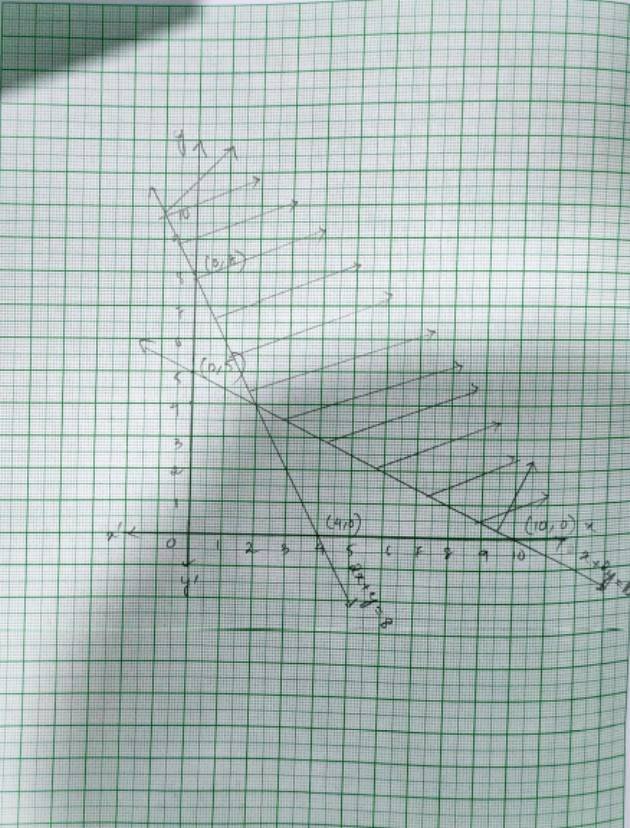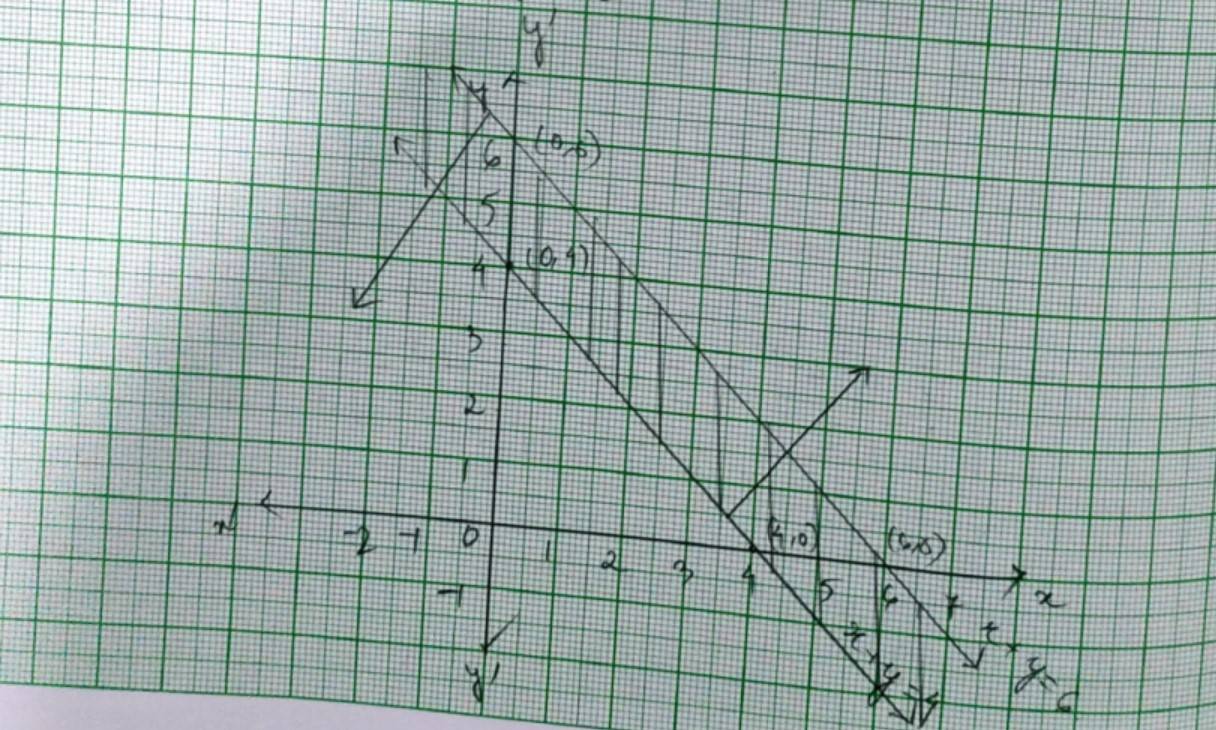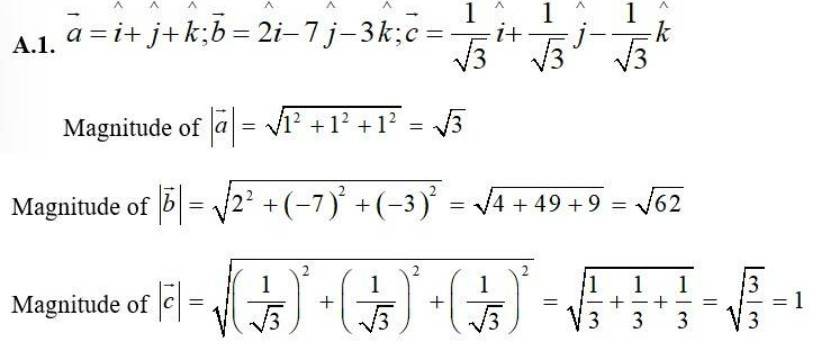Maths
Get insights from 6.5k questions on Maths, answered by students, alumni, and experts. You may also ask and answer any question you like about Maths
Follow Ask QuestionQuestions
Discussions
Active Users
Followers
New answer posted
6 months agoContributor-Level 10
43. Given system of inequality is
2x+y≥ 8- (1)
x+2y≥ 10- (2)
The corresponding equations are
2x + y = 8
x | 0 | 4 |
y | 8 | 0 |
and x + 2y = 10
x | 10 | 0 |
y | 0 | 5 |
Now, putting (x, y)= (0,0) in inequality (1) and (2),
2 * 0+8 ≥ 8
0 ≥ 8 which is not true.
and 0+2 * 0 ≥ 10
0 ≥ 10 which is not true.
So, solution of plane of inequality (1) and (2) does not include the origin (0,0)
? The required solution of the given system of inequality is the shaded region.

New answer posted
6 months agoContributor-Level 10
Let the vector with initial point P (2,1) and terminal point Q. (-5,7) can be shown as,
The scalar components are -7 and 6.
The vector components are -7i and 6j.
New answer posted
6 months agoContributor-Level 10
Note that two vector are equal only if their corresponding components are equal.
Thus, the given vectors and will be equal if and only if
New answer posted
6 months agoContributor-Level 10
42. The given system of inequality is
x+y≤ 6 - (1)
x+y≥ 4- (2)
So the corresponding equations are
x+y=6
x | 0 | 6 |
y | 6 | 0 |
and x + y = 4
x | 4 | 0 |
y | 0 | 4 |
Putting (x, y)= (0,0) in equality (1) and (2),
0+0 ≤ 6 and 0 + 0 ≥ 4
0 ≤ 6 is true. => 0 ≥ 4 is false.
So, solution of plane of inequality (1) includes the origin and inequality (2) does not includes the origin.
? The reqd solution of the given system of inequality is the shaded region.

New question posted
6 months agoTaking an Exam? Selecting a College?
Get authentic answers from experts, students and alumni that you won't find anywhere else
Sign Up on ShikshaOn Shiksha, get access to
- 65k Colleges
- 1.2k Exams
- 679k Reviews
- 1800k Answers




